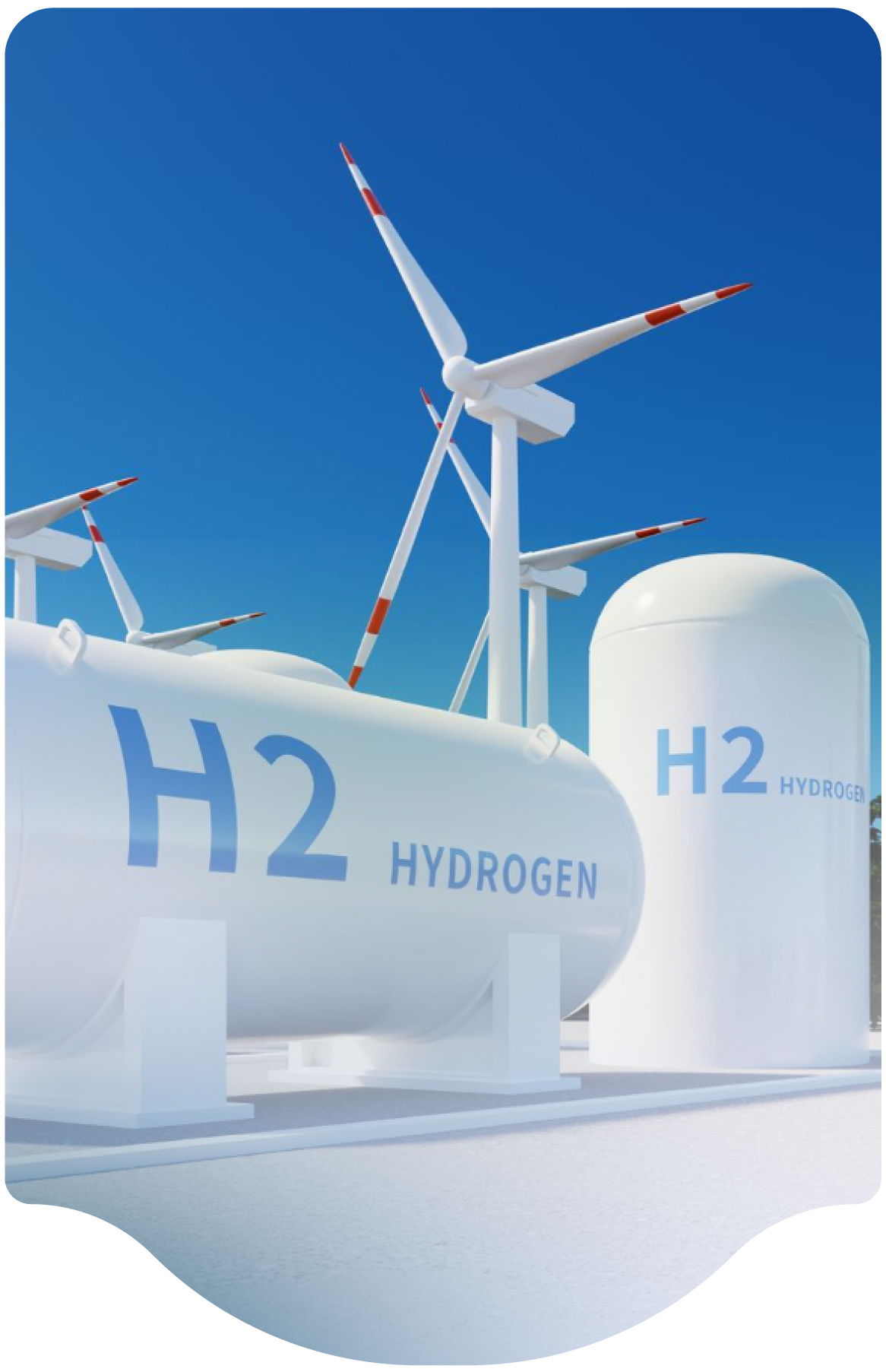What are the best practices for sizing hydrogen (H2) vent systems? Are there any established rules of thumb or specific criteria you recommend? For example, there is a guideline that limits the fluid velocity in vent headers—should this general criterion also be applied to large hydrogen projects?
The design of vent systems is critical to the safety of the system. From a process perspective, the pipe design must be sufficient to withstand back pressure, internal pipeline pressure, deflagration pressure, thrust forces from the flow, and must be of a sufficient size to not create a restriction that prevents proper flow or activation of the devices.
The vent system design starts with relief devices. Devices must first be sized based on the expected demand cases. Documents such as CGA S1.3 or API 520 can provide guidance to size devices for fire situations. It’s up to the designer to develop potential relief cases for other process demands, such as runaway heaters, compressors, backflow, etc. Once the relief devices are properly sized, then the discharge piping can be designed such that flow is not restricted. For example, ASME relief valves will usually require the pressure drop on the downstream side of the device to be no higher than 10% of the set pressure. Rupture discs don’t have the same requirement, but it is still necessary that the relieving capacity is not reduced below the demand case. It’s also important to size the relief discharge piping for multiple devices where these devices (from different vessels, piping, etc.) could potentially vent simultaneously. This is a particular concern where there may be many, sometimes even dozens, of devices on pressure vessels used for fire protection where all vessels can be exposed to fire at once. As a rule, discharge piping will nearly always be larger than inlet piping, and the piping must be larger than the device orifice. If there is a piping venting case (even if manual) into the same stack where both the vent case and the safety relief device can open simultaneously, the vent stack must be designed for all these cases.
Documents such as CGA G5.5 and API 521 provide guidance, requirements, and best practices for the design of vent systems, including addressing the thrust forces caused by high flow and velocity.
There are advantages to reducing the amount and rate of hydrogen released. Relief devices should not be oversized with an unnecessary safety factor. Reduction of flow will lower reaction forces and the mass of hydrogen in the released cloud during an event. A method to reduce the amount of hydrogen released is to use relief devices that reclose rather than emptying the entire inventory (i.e., rupture discs). However, rupture discs may still be needed if the storage vessels are subject to an engulfing fire to ensure the pressure is reduced before the mechanical integrity of the vessels is lost.
Pressure rating and set pressures of the devices are also a concern. For example, a 3000-psig set pressure device with the typical 10% allowable back pressure, would allow up to 300-psig in the vent header. If a lower set pressure device were connected to the same header, then the backpressure would not allow it to operate properly, leading to possible overpressure of the process system. Best practice would be to use different headers on systems that operate at significant differences in pressure. A best practice is using a maximum 5:1 ratio to determine when a separate higher-pressure vent system is needed. For example, discharge from a device set at 100 psig should not be piped into the same vent system as a device set above 500 psig, even if the piping is nominally sized to allow minimal backpressure.
Another consideration during the hazard review is to ensure that vent headers do not create a common mode failure such that redundant devices could be blocked from a single failure. Care must also be taken so incompatible materials (e.g. hydrogen and oxygen) aren’t vented on a common manifold and that contamination (e.g. compressor oil) doesn’t affect other portions of the system where a source of contamination is present.
When designing a vent system, the designer must perform a process safety analysis to ensure the hydrogen cannot flow to unexpected locations. It is never a good design to tie a hydrogen vent system into a building ventilation system. Maintenance is also an issue since vent headers can be an overlooked cross tie between portions of systems that otherwise are properly isolated on the upstream side. For example, if maintenance is being performed on a relief device, and a separate device activates elsewhere on the same header, then backflow could create a hazard while the vent piping is disassembled. One simple best practice is to vent hydrogen vertically where possible, using momentum to supplement its natural buoyancy. Wind can affect hydrogen flow, so it does not always rise straight up after release. Top works should also be designed to minimize plugging due to weather and other causes.
Numerous incidents have occurred where vent systems failed or leaked during device activation. A best practice is to pressure test vent systems above the expected backpressures to ensure integrity per ANSI B31.3. Additionally, it is critical to support the vent stack to ensure it maintains its mechanical integrity during venting and weather events.
It is difficult to control fluid velocity in a vent header since nearly all relief systems will operate at a pressure that will result in choked/sonic flow at some location in the discharge piping or outlet. There is generally no velocity limit within the piping, but from a practical perspective, high velocities will result in high, excessive pressure drop. The velocity is only limited by the requirement to maintain maximum pressure drop of no more than 10% of the relief device set point in the vent system.

